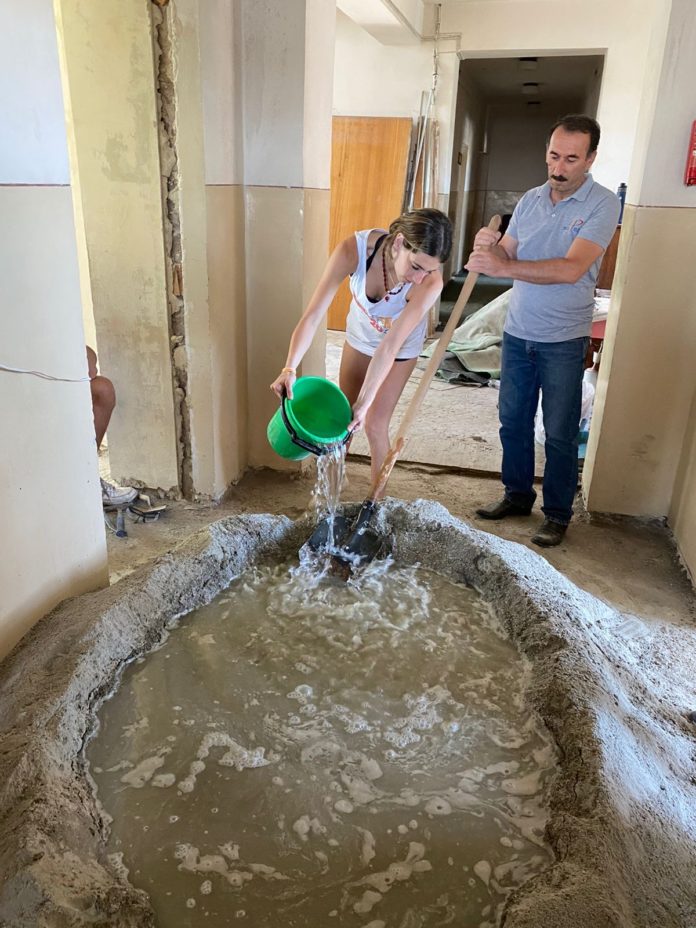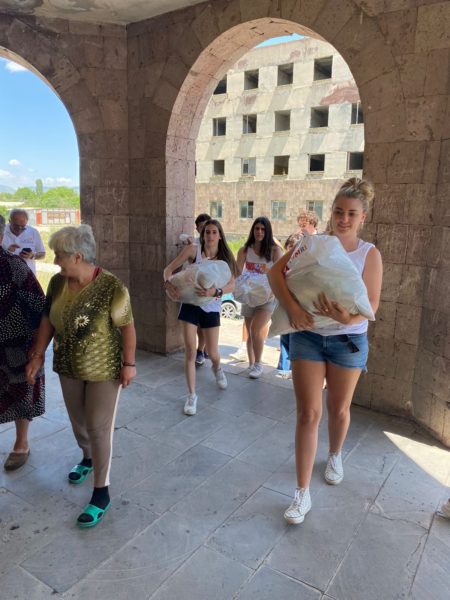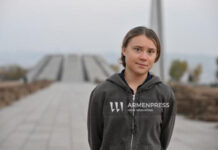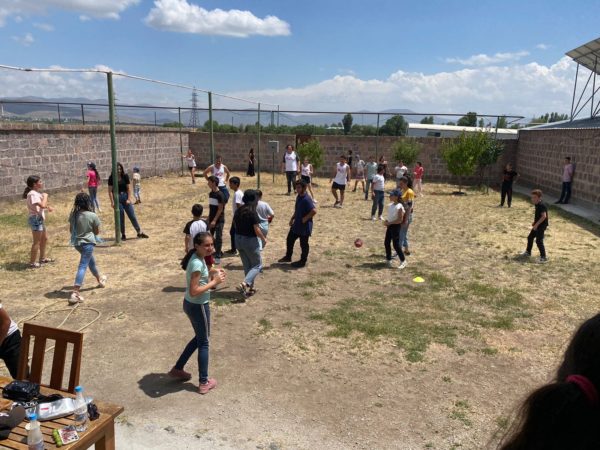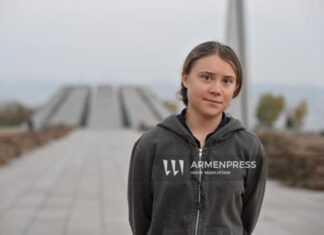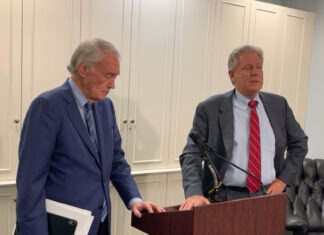YEREVAN — “The construction related projects were sometimes laborious but always very rewarding, with apparent progress offering a consistent boost in moral. The work with the children was also fascinating, as we got a look into the educational and cultural differences in the next generation of Armenians, and gained some perspective on our own upbringings.” This is how Justin Leach described two aspects of the work he engaged in this summer, during his vacation from college. He and his cousin Christina Kew were two of a group of eight youngsters from America who took part in the Paros Foundation’s SERVICE Armenia program, spending three weeks in the country that their ancestor, survivors of the Genocide, never had the opportunity to visit. Their great-grandparents, Artemis and John Mirak, would have been thrilled to learn of their experience. Their great-aunt (who is writing these lines) certainly was excited to talk to them about it.
Justin and Christina were in Armenia from July 3-24, serving as volunteers on projects to physically renovate social facilities, assist in educational and recreational activities with local youngsters, and visit religious and historical sites to learn more about their own cultural heritage. The Paros Foundation provides the projects, logistics, and experienced staff to guide them, and the volunteers do the work.
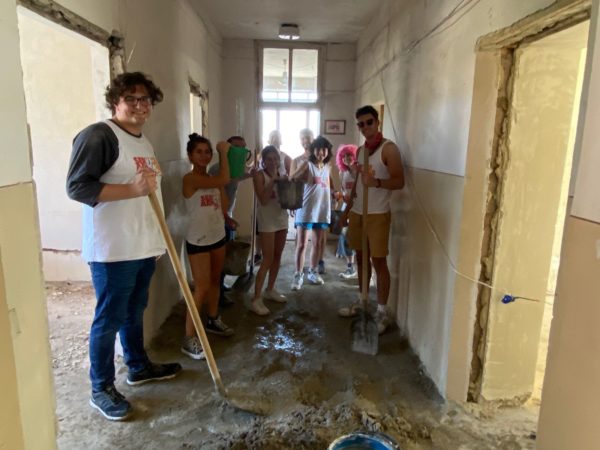
Tearing Down and Building Up
This was no token gesture; it was hard work. The first deployment was on a construction site. Talin, which is located in the Aragatsotn Region, is a town with about 5,400 inhabitants, and, like so many small communities, does have a music school. However, the school was in terrible shape when the Paros Foundation took on the task of renovation. The 15 teachers there in 2016 were providing instruction for 120 students, but without adequate facilities for practicing, not to mention performing; the health and safety standards were poor, utterly unconducive to motivating students. Paros decided to embark on a project, in cooperation with the town, to provide it with a modern school where youngsters could study music, both folk and classical, and with appropriate instruments. Concretely this meant rebuilding the existing structure, totally renovating two floors, building a concert hall, and providing modern rooms and sanitary facilities.,
“We were there for 3 to 4 days,” Leach said, “helping with the construction project. They took us up to the third floor, which had been renovated, and then we went to the floor below, which needed it. There was dust everywhere, the floors were coming apart. Our task was to tear out the wood of the floors, using hammers, to chip away at the tar that was like glue; this way we could tear out the old floor boards and make way for a new floor.”
That was just the beginning. “On Day 2,” he continued, “we scraped paint off the walls, then primed them for a new coat of paint.” Construction work is demanding and requires teamwork. In fact, there was a clear division of labor. “The boys carried sand and bags of cement up, in assembly-line fashion, and the girls brought up the water to make the concrete. And then they had the task of priming the walls.” It required not only muscle power but also time. “We spent a couple of days mixing sand and cement to make concrete,” he explained. “Everything was done manually. We had to shovel and churn, filling up buckets, making concrete. It was arduous, pretty grueling.”



